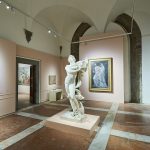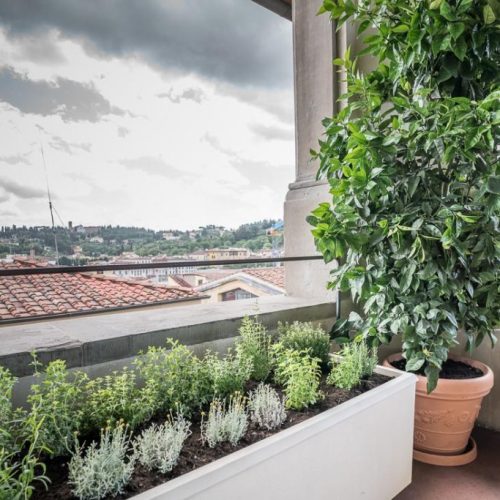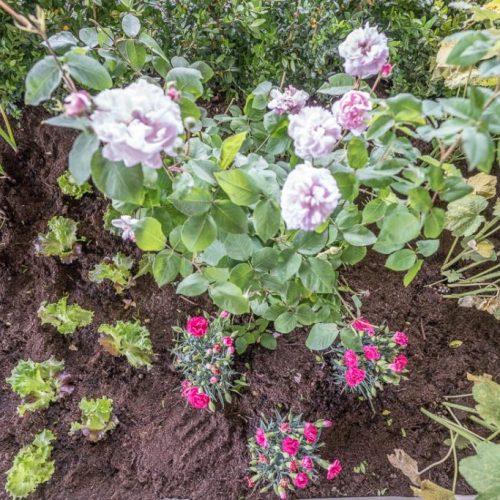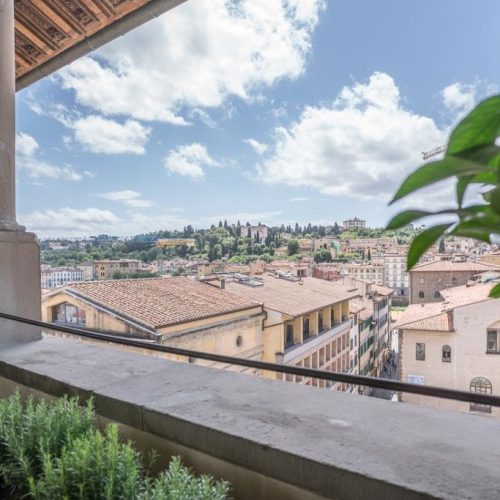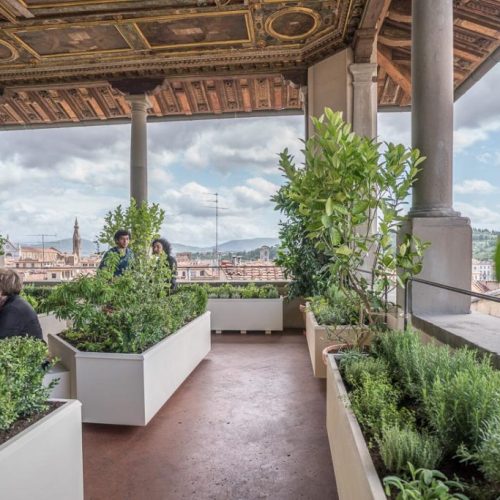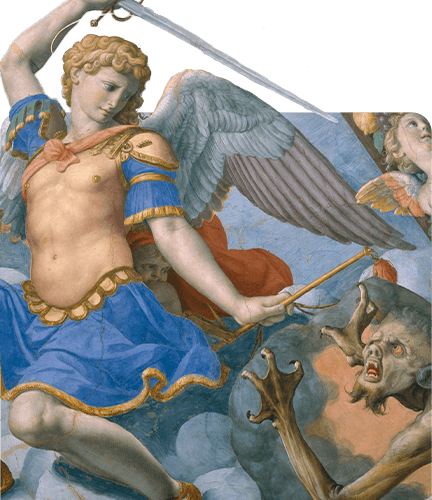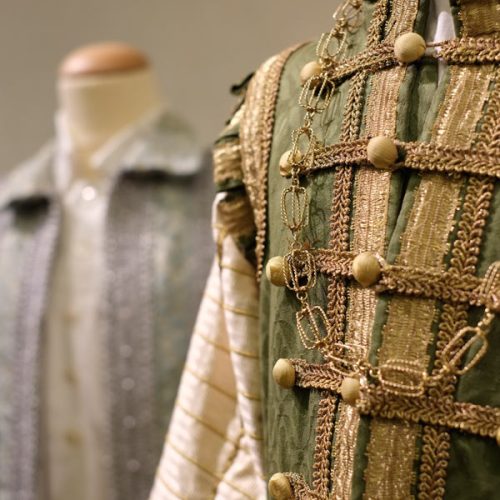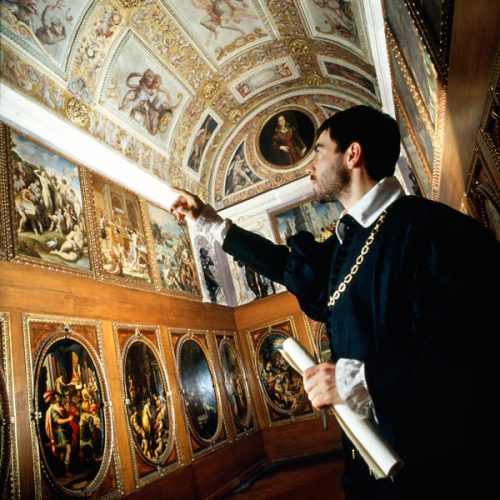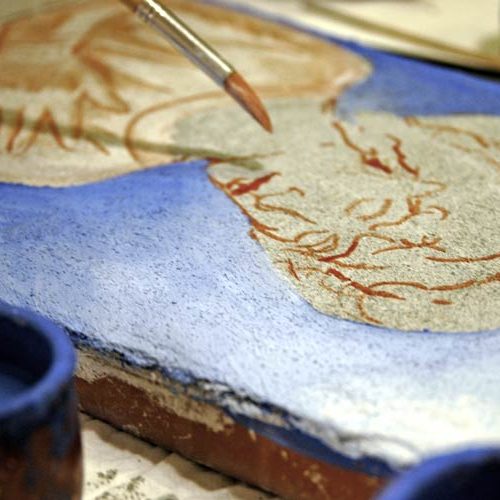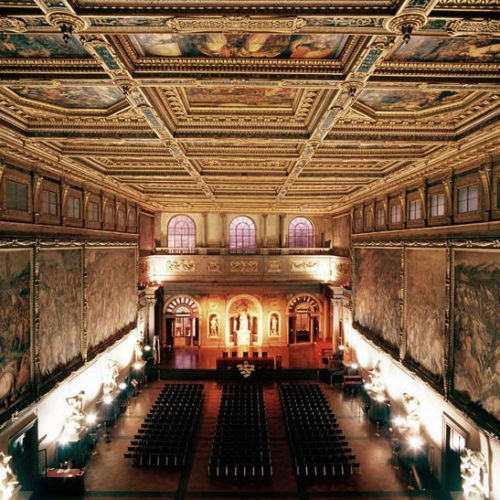A Garden in the Palace
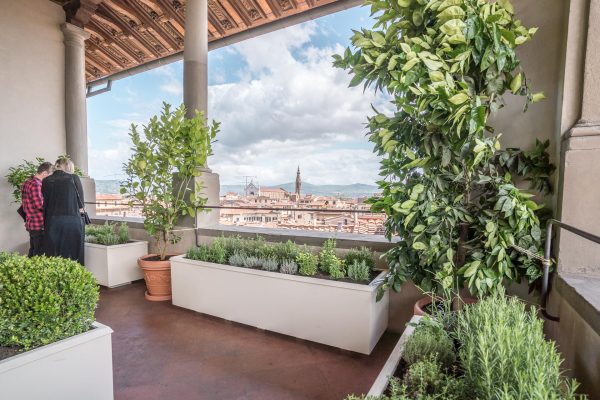
to 25 September 16
Loggia of Saturn – The Museum of Palazzo Vecchio, Florence
On Monday, May 23rd, the landscaped roof garden in Palazzo Vecchio was inaugurated: the setup – promoted by Musei Civici Fiorentini and curated by the Associazione MUS.E with the technical sponsorship by Gruppo Zelari – recalls the orticini adorning the ducal palace of Cosimo I de’ Medici and Eleonora de Toledo in the middle of the sixteenth century. Grafted onto the palace’s austere walls of sandstone to compensate for the lack of a true garden, the gardens offered a pleasant source of entertainment and were able to satisfy the slightest whim “enjoying salads and fruits at whatever moment of the day and of the night” (G.V. Soderini, Trattato degli orti e dei Giardini, published only in 1814).
A “green marvel” for the eyes and for the nose, allowing the visitors to delve into the tastes and atmosphere of the Medici court in the sixteenth century. The setup takes place on the Loggia of Saturn, one of the many open spaces, loggias and balconies realized during the transformation of the building into the ducal residence, whose name recalls the series of paintings decorating the ceiling and dedicated to Saturn and that offers a spectacular view of the southeastern side of Florence. Since the paintings really need an intervention of restoration, a campaign of awareness and crowdfunding meant for such restoration was started off in connection with the garden.
The garden will be accessible till September 25th, without an increase of the ticket of Palazzo Vecchio. Visitors will be able to read on a free booklet in Italian/English the reasons, characters and specifications of the garden.
What were these orticini? The term could refer to limited portions of a garden but also to big vases and containers – in terracotta or bronze –where plants and early produce grew. And such a vegetable garden had by rights to be in the ducal palace, considering the interest and passion that Cosimo I de’ Medici and Eleonora de Toledo shared for the natural world. The Duke, a dedicated scholar of natural sciences, was able to promote a real “botanical Renaissance” (suffice it to mention the creation of the botanical Gardens in Pisa and Florence). The Duchess, on the other hand, having enjoyed wonderful landscaped roof gardens overlooking the gulf at her father’s palace, Castel Nuovo, in Naples, once in Florence was to carefully attend to the management of the gardens in all the Medici residences, as the one in the new residence, Pitti Palace, she had personally contributed to buy, and the orticini of the palace overlooking the square, probably located on top of the building, near the walkway on the battlements: “the new mansion was beautifully adorned and the Duchess added the delight of hanging gardens, admired by the entire city” (R. Galluzzi, Istoria del Granducato di Toscana sotto il governo Medici, 1781).
Places of pleasure to delight and surprise, mirrored in the palace by a decorative plan strongly inspired by nature. Still today the painted ceilings and walls of the palace are brimming with floral decoration and fruits, symbolizing the wealth of the state but also accurately depicting new plants coming from all over the world. We must also recall Cosimo’s studio, painted by Francesco Ubertini called Bachiacca, where the botanical description reaches its climax: the walls display all sorts of plants, fruits and vegetables, almost a painted natural encyclopedia.
The species proposed in the current garden are the result of a selection of plants mentioned in the archival, iconographical and historical and literary sources. The arrangement – that follows the principles of order and symmetry of the modern period but updated to contemporary times – provides for vases of citrus fruits, espaliers with fruit-bearing plants, pomegranate trees and roses, vegetables and early produce, aromatic plants, artificially shaped boxwood and laurel, echoing the fantastical Renaissance evergreen shrubs «in the shape of balls, spires, horses, dragons and other animals that create wonder in the visitors» (Del Riccio 1595).
Dedicated tours will be offered for the duration of the exhibit: thematic itineraries for adults and sensory workshops for kids (Saturday, 4th and 18th of June, Saturday 10th and 24th of September), in addition to three educational “talks” led by experts in the field. The first one, dedicated to the plants at the Medici court, discussing science, agriculture and art, will take place on Wednesday, May 25th, and will be delivered by Maria Adele Signorini; the second one, on the theme of gardens in the past and today, will take place on Wednesday, June 8th, and will be delivered by Giorgio Galletti and Tessa Matteini; the third and last one, at the end of the project, will take place on Wednesday, September 21th, focusing on the Medici green contribution to the city and will be delivered by Elisabetta Stumpo.
Download “A Garden in the Palace” Booklet
Comune di Firenze
Musei Civici Fiorentini
Associazione MUS.E
A cura di: Valentina Zucchi, Associazione MUS.E
Supervisione scientifica: Serena Pini, Museo di Palazzo Vecchio
Progetto scientifico: Maria Adele Signorini, Elisabetta Stumpo, Valentina Zucchi
Progetto di allestimento: Andrea Meli e Marinella Carrieri, Studio INLAND
Selezione e fornitura piante: Luca Inzaina, Gruppo Zelari
Esecuzione allestimento: Euroambiente, Gruppo Zelari
Thank to:
Dir. Cultura e Sport – Servizio Musei, Dir. Servizi Tecnici – Servizio Belle Arti e Fabbrica di Palazzo Vecchio, Dir. Ambiente, Dir. Generale – Servizi Prevenzione e Protezione del Comune di Firenze
Museo di Storia Naturale dell’Università degli Studi di Firenze, Sezioni Botanica e Orto Botanico


